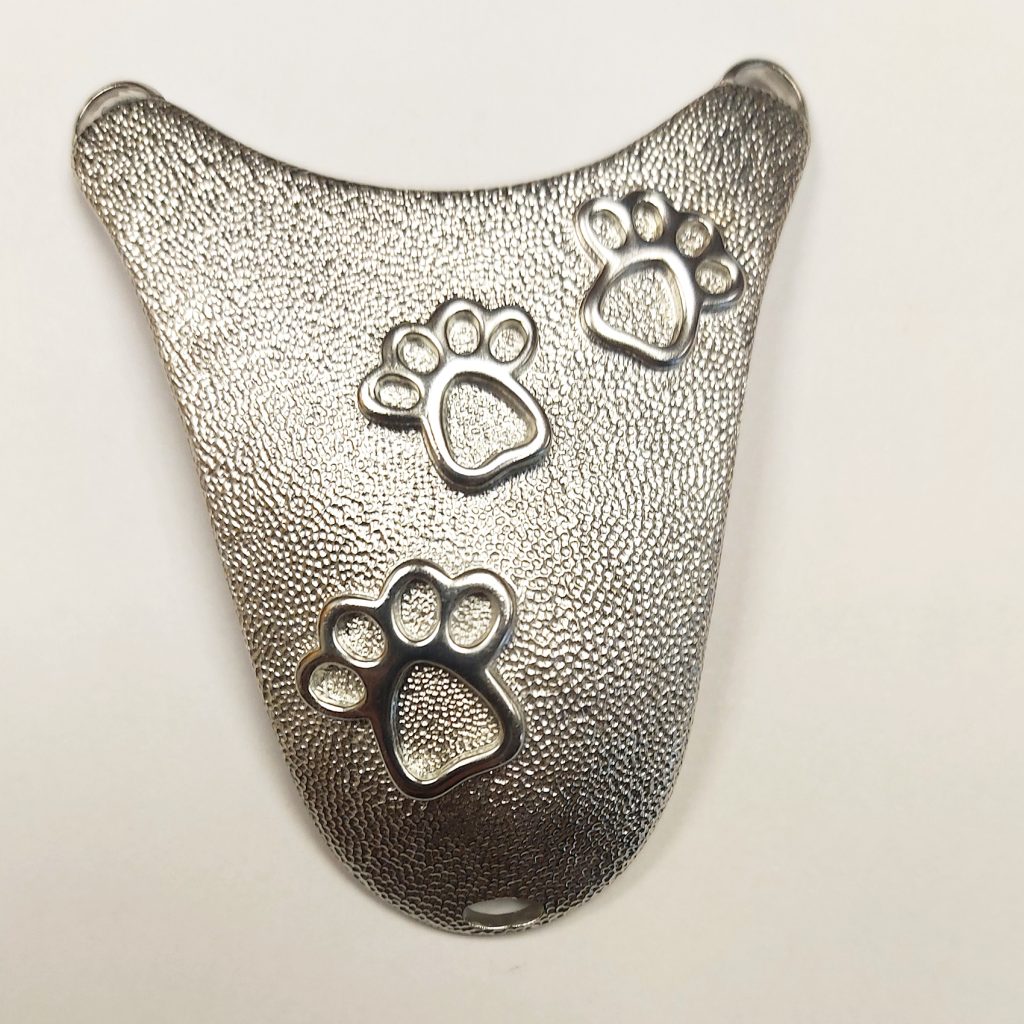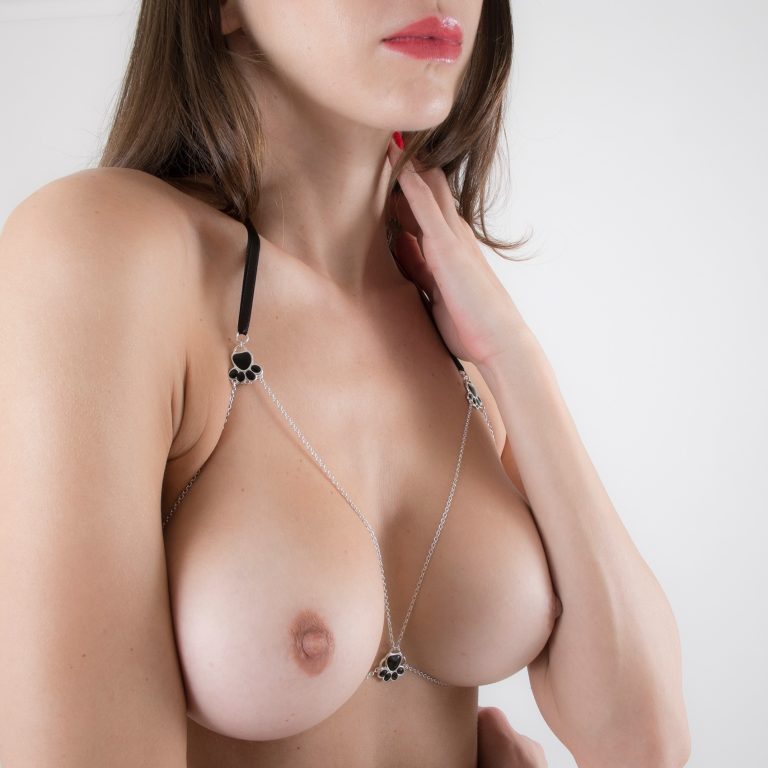Some sketches of new intimate jewelry
Before arriving at your home in their velvet cases, before to sublimate and caress the skin, the jewels of the collection “When jewels dare…”, required hours of work, starting with the birth of the idea, the birth of the sketch on paper… Sylvie Monthulé tells us all about it!
Sex cover “velvet cat paws”
I like the idea that sensuality can leave traces on the body. A bit like a cat’s pawprints on the sand. It’s in this spirit that I imagined the new G-strings collection. The feline’s paws leave their signature on the thong like a tattoo. The g-string’s gold or silver surface is finished with a “granite” effect to bring out the play of the prints, which we wanted to be raised and shiny black. It’s a mini thong designed to barely cover the sex, with feline softness.

Catwoman jewelry
At once sensual and wild, sweet and rebellious, Catwoman is a character who’s all about desire, provocation and envy. She can be all women at once! How could we resist transforming her into a sleek, elegant gem? Her smooth body is dressed in gold or silver, and takes on a feline posture, as if preparing to pounce. Only her arched form and outstretched tail accentuate her voluptuousness…

Cat-masked thongs
I wanted to symbolize voluptuousness with a luminous and sensual, feline mask. A mix of colors with the interplay of gold and black, silver and black, and a mix of materials for this jeweled thong designed with granulated parts and enameled parts. The female sex is adorned with a soft, mysterious mask, inviting boldness and the discovery of the most beautiful jewel of all : love.

Feline fingerprints on the body…
The little cat’s paws jewels are created like sensual tattoos. They follow your desires, your emotions, and become draped thongs, waist chains, penis bracelets, bra ornaments… Adorable love tattoos on the skin!










